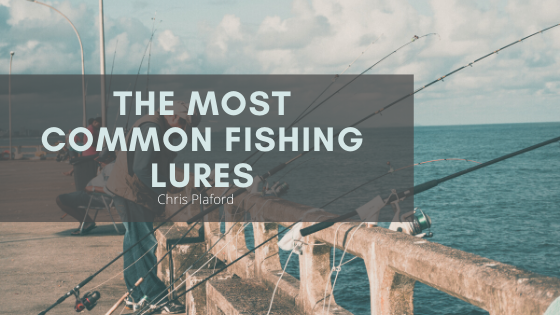Fishing is one of the oldest and most popular pastimes around. Stemming from a pure necessity to defeat hunger, it is now a beloved hobby, a competitive sport, and for many, a unique opportunity for peace, beauty, and tranquility among nature.
The Top Six Most Common Fishing Lures
Fly Lures
Fly fishing is a particular type of fishing that traditionally uses flies as bait. This method works best for fish that often rise to the water’s surface. The delicate art of fly-tying is extremely intricate and quite tricky, but luckily, there are specific lures that cut out all the hassle.
Fly lures are composed of just one hook and a skirt, and they use feathers, fur, thread, and other materials to resemble moving insects, tiny fish, crustaceans, and other types of bait. There are two types; surface fly lures that float on the surface, and subsurface lures that sink.
You can use dry flies that are waterproof and designed to float, wet flies that sink slightly and move like injured insects, minnows, and other bait, emerging flies, which are hatching insects; streamer flies known as baitfish, or nymphs, which imitate subsurface insects and aquatic worms.
Jigging Lures
Jigs are composed of a weighted head and hook. Because of their practicality, ease, and performance, jigging lures are the most widely used in fishing. Their weighted design allows them to sink quickly and easily, making them perfect for bottom-feeding fish and most other commonly sought after catches that bite at high retrieval speeds.
Plug Lures
Plug lures are sometimes referred to as crankbaits and are designed and colored to resemble lifelike fish and other prey. These consist of a hard solid or hollow plastic body with an often adjustable lip (a lip is a thin sheet of plastic or metal on the lure’s tip that makes the movement more realistic). Plug lures usually feature two or three hooks and can float, hovering, sinking, or diving.
Soft Plastic Lures
Commonly used for bass fishing, soft plastic lures are made out of soft, rubbery materials that resemble squirming, wriggling, little worms, insects, frogs, minnows, crawfish, and other creepy, crawly creatures. Their movements are often remarkably similar to wounded fish and other prey and are especially enticing for other fish. Soft plastic lures feature special colors designed to blend in with their surroundings naturally and effectively.
Spinnerbait Lures
Spinnerbaits move horizontally through the water and mimic baitfish incredibly. Available in many different sizes, shapes, and colors, they include a skirted hook on one end and a blade (or two or three) that spins just like a propeller on the other. These blades spin, creating powerful vibrations and flurries of colorful reflections that are usually irresistible to fish and are especially useful for bass, perch, and pike.
Spoon Lures
Spoon lures were first made from actual spoons with broken or cut off handles. Spoon lures are especially useful because their concave shape provides incredible wobbling motion in the water and alluring light reflection in all directions.
More Information
Different types of lures are designed explicitly for certain fish, so be sure to research and utilize the best for you and your individual needs.
